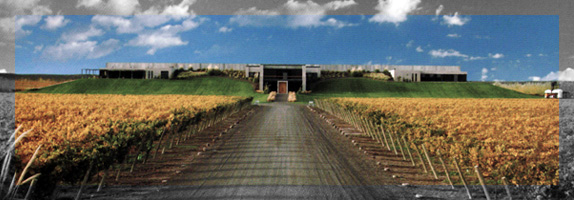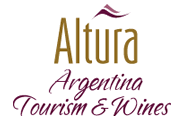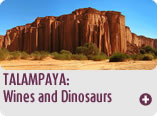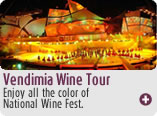
Argentina wine regions
Patagonia (Rio Negro and Neuquén Provinces)
Patagonia is surrounded by Limay and Neuquen Rivers and its vineyards cover more than 32,700 hectares. Its soil texture is thick and stony, ideals characteristics for viticulture.
It is the southernmost viticulture region in Argentina and the lowest (around 400 meters
above sea level). The climate is continental, dry, very windy and temperate with remarkable temperature ranges.
San Patricio Del Chañar in Neuquén, a recent development from entrepreneurs that have found a zone with excellent conditions of climate and agriculture. Its wineries have the last technology in order to achieve outstanding quality.
It is considered the firs settlement of colonizers in Patagonia.
San Carlos de Bariloche, an important tourism city, has a magnificent view to Nahuel Huapi lake. There is also Las Grutas, in San Antonio 0este, with its clear waters which invite us to enjoy the sea.
Viedma, the capital city of Rio Negro, was founded in 1779 by Francisco de Viedma and Narváez. It is considered the firs settlement of colonizers in Patagonia. Rio Negro River separates this province from Buenos Aires province.

NQN Winery. Neuquén.
The region’s ecological characteristics of white wines flavour such as Chardonnay and Sauvignon Blanc. This last one, in addition to its regular features, displays exceptional smoky flavour difficult to find in other regions around the country. Great reds are also produced.
Pinot Noir and Merlot find their most original expressions, due to they are varieties with a short cycle to reach full maturity.
Neuquén
Neuquén shows magnificent landscapes wherever it is observed. From its southernmost place to its capital city, this province imposes tourism classics in the national calendar.
The homonymous capital City, founded in 1904, by Carlos Bouquet Roldán which shows us a powerful commercial and industrial development giving force to the province.
Its geography is surrounded by Limay and Neuquen Rivers, which give life to spectacular lakes that contrast with the Andean mountain range. Villa La Angostura and San Martin de Los Andes are obligatory stops for tourists who decide to visit it. Besides, El Chocón is a place that attracts scientists from all over the world due to the paleontologic richness, home of the strangest dinosaurs.
Río Negro
This is one of the few provinces in Argentina which geography comprises from the Andean mountain range to the coasts in the Atlantic Ocean. Its orography ranges from the highest peaks to very low ones.
Negro River is the dividing line between this province and Buenos Aires province.
Viedma, the capital city, was founded in 1779 by Francisco de Viedma and Narváez.
Its climate is cold and the altitude is low, approximately 200 meters above sea level,
Viticulture and Winemaking
From the department of Confluencia in Neuquén until General Roca in Rio Negro the southernmost viticulture in the country is developed. With San Patricio del Chañar and Añelo leading the endeavour, the rivers: Limay, Neuquén, Colorado and Negro are in charge of irrigating the zone.
|
which allows adequate grapes ripening. However, musts in this area have a high percentage of malic acid and less sugar, which provides optimal conditions for the cultivation of Merlot and Pinot Noir.
Referring to red wines, the varieties that fit more in this region are Cabernet Sauvignon, Merlot, Malbec and Pinot Noir. And for white wines: Semillón, Sauvignon Blanc, Chardonnay, Riesling and Torrontés from Río Negro.
![]()
![]()















